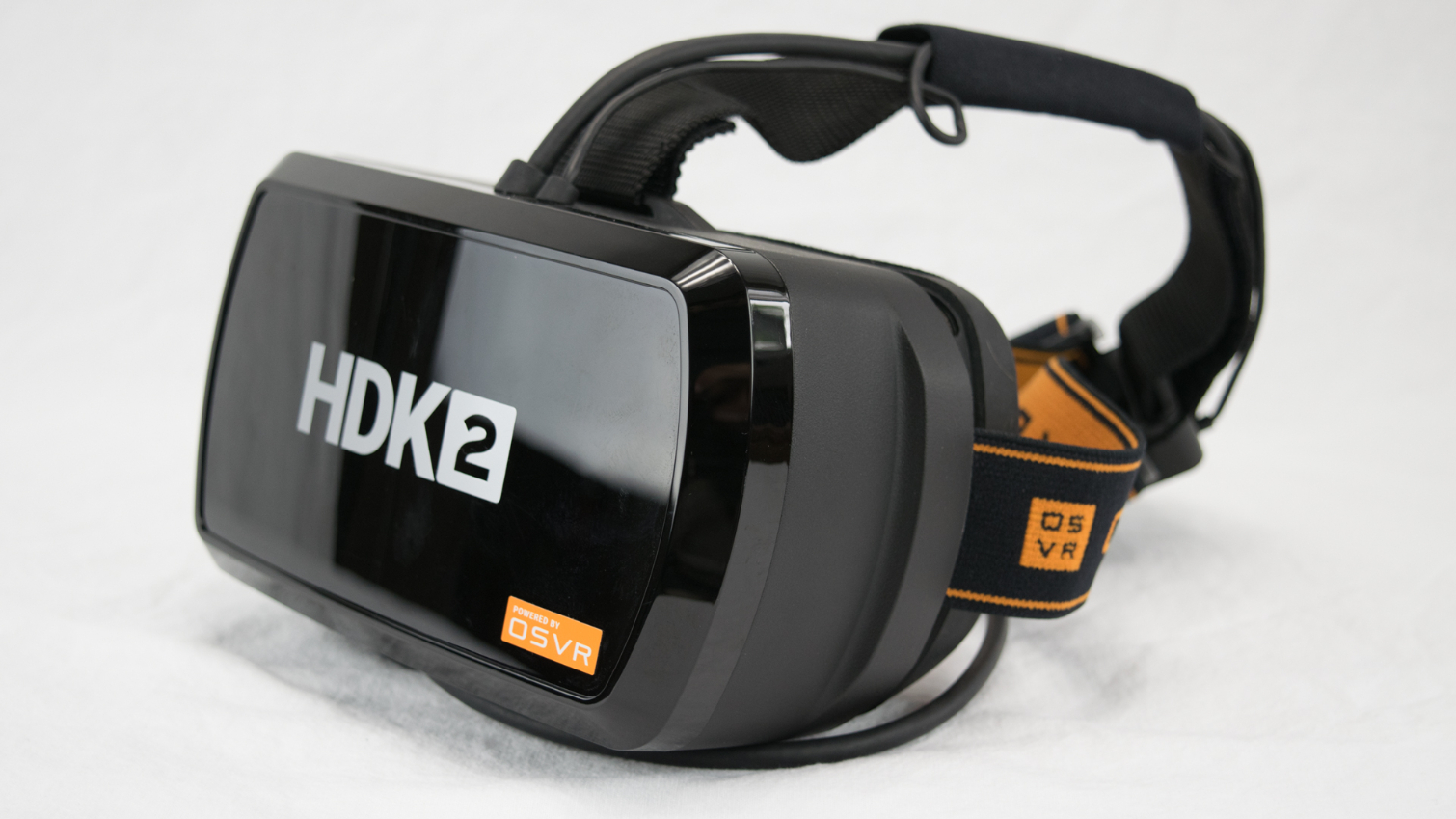Early Verdict
The OSVR HDK2 is a marked improvement over the HDK 1.4, but it still falls short of the mark. The poor tracking solution remains the weakest link of the OSVR platform, and it sullies the entire package. Robust tracking is a key pillar of enjoyable VR and OSVR’s tracking solution doesn’t hold its own against the competition.
Pros
- +
Industry Standard Resolution
- +
Open Platform
- +
Ideal For Tinkerers, Inventors
Cons
- -
Poor tracking quality
- -
Uncomfortable fitment
- -
Poor weight distribution
- -
Too many cables
Why you can trust Tom's Hardware
OSVR HDK2 Product 360
When Sensics and Razer started OSVR, the group’s mission was clear: create an open source VR platform to give developers and hardware manufacturers a starting point upon which they could build their own HMDs and accessories. The OSVR movement is still dedicated to its original purpose, but it's shifting some focus toward end-users now that it has an HMD with specifications in many ways comparable to the competition, along with native support for hundreds of SteamVR titles.
Last summer, we looked at the Hacker Developer Kit 1.4. The OSVR group suggested that its HDK 1.4 offered developers a budget-oriented alternative to the expensive HTC Vive and Oculus Rift HMDs. However, we found the software support too limited, the hardware too clunky, and the tracking system too unrefined to recommend. Only curious tinkerers and hardware developers had any business messing with the OSVR headset.
Shortly after we received our HDK 1.4 review sample, the HDK2 was introduced, featuring a dual-screen display boasting the same resolution as HTC's Vive and Oculus' Rift. Given a relatively poor first impression from the OSVR HDK 1.4 and a then-recent price drop from Oculus, we didn't think the HDK2 would compete.
Eager to prove us wrong, the forces behind OSVR sent Tom's Hardware an HDK2 HMD for a fresh take.
Specifications
Product 360 & Software Suite
You would be hard-pressed to identify the OSVR HDK2 sitting next to an HDK 1.4. After all, the latest version employs the same housing. Its body is made of injection molded flat-black plastic. Up front, there's a removable faceplate containing an array of IR lights, and the facial interface consists of a pliable rubber-like material with a soft foam gasket attached by Velcro.
The HDK2 headset features a three-point head strap with an elasticized band that wraps around your head, plus an adjustable Velcro strap for support on top. The two side straps and over-head support come together at the back where they attach to a rectangular block equipped with more IR LEDs for rear tracking. A single data cable passes up through the box, over the top of the Velcro strap, and into the HMD’s faceplate. Another cable from the faceplate passes over the top, powering those rear IR LEDs.
Unfortunately, there's still a mess of cables to contend with. Both versions of the HDK employ a breakout box for the data and power connections that you must attach to your belt or pants. A single cable with a proprietary connection comes out of the HMD and runs down your back to this breakout box, which exposes ports for HDMI, power, a headphone jack, and USB. The HDKs include a four-meter power and HDMI combo cable.
Get Tom's Hardware's best news and in-depth reviews, straight to your inbox.
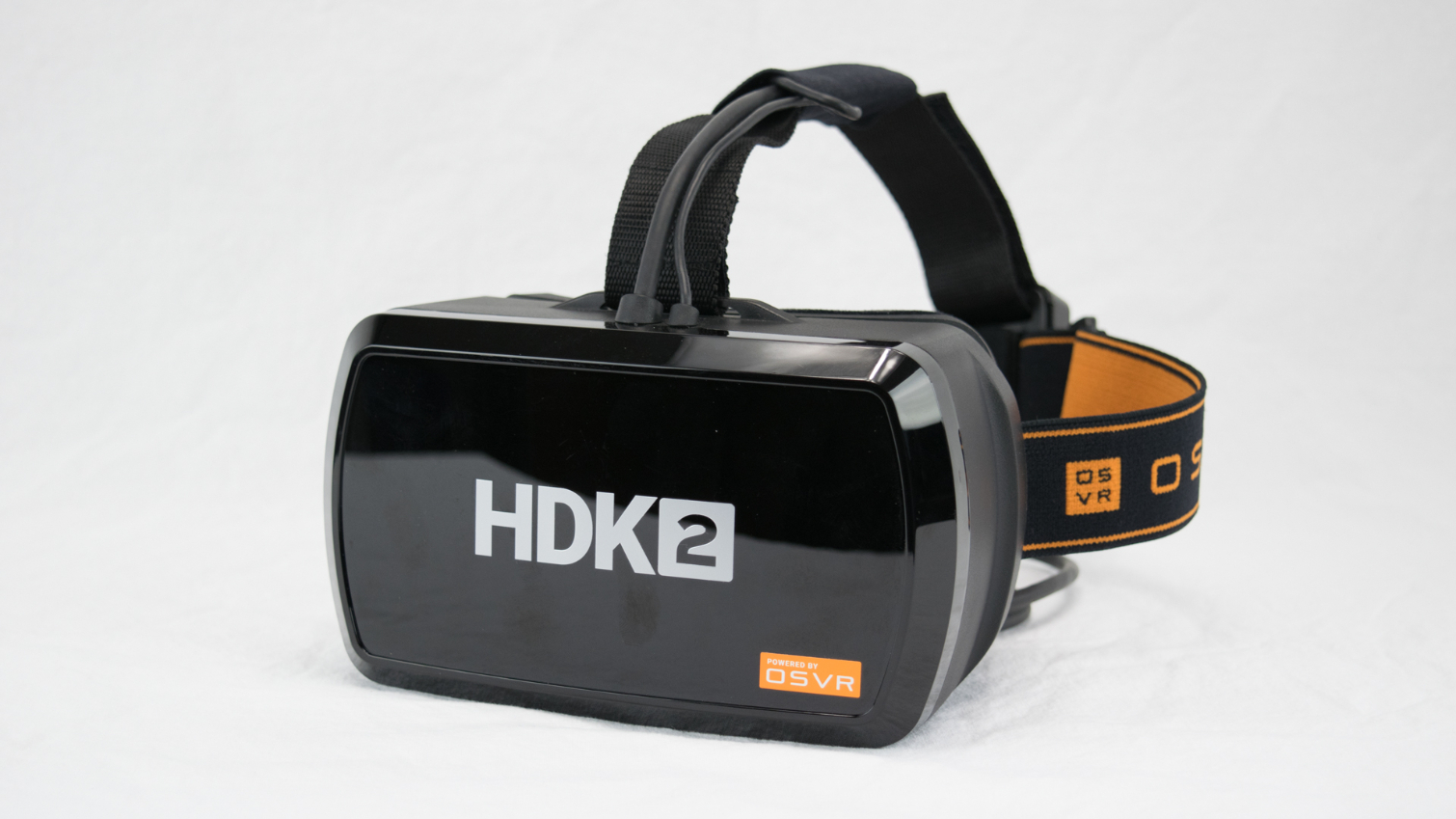
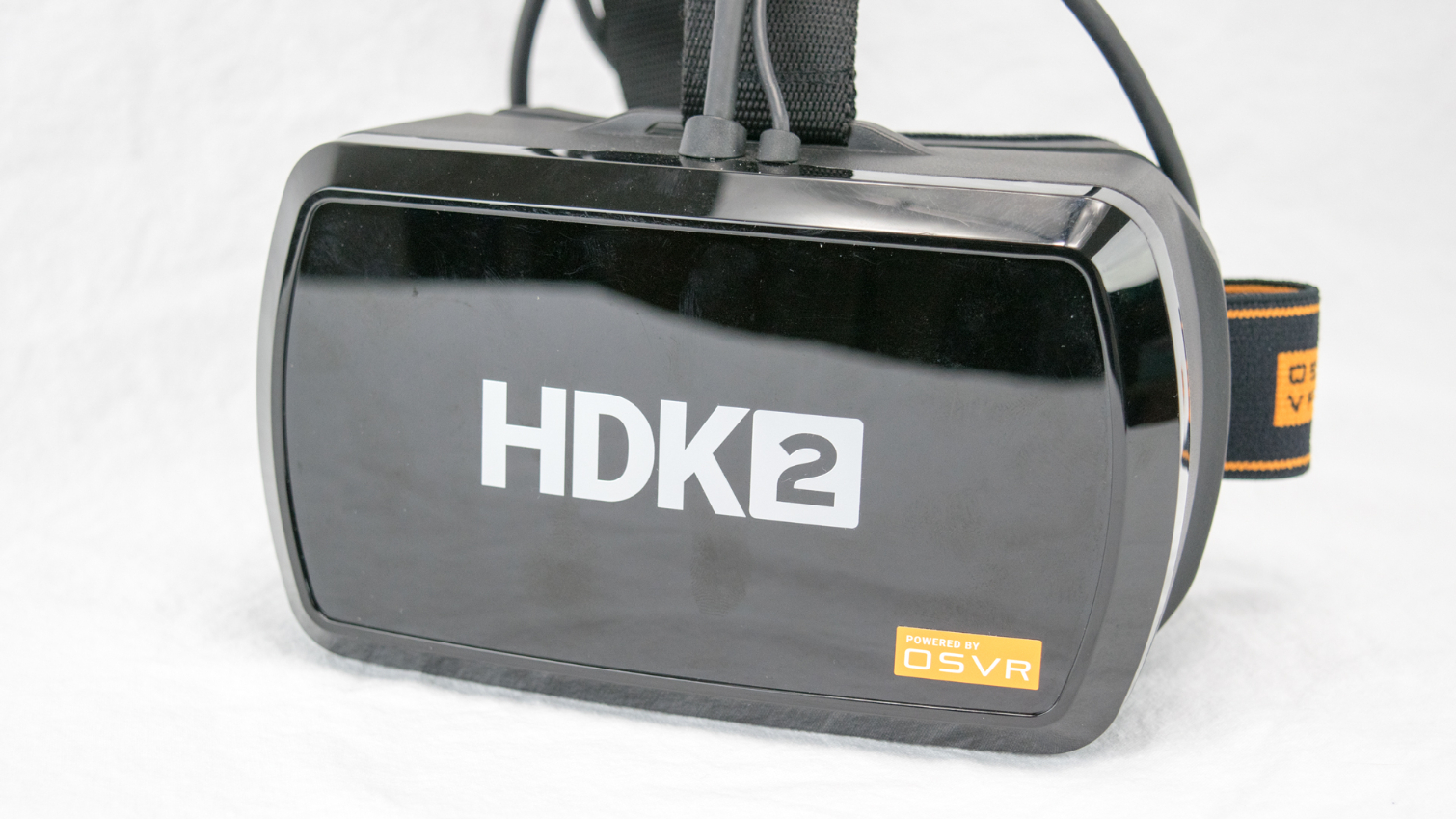

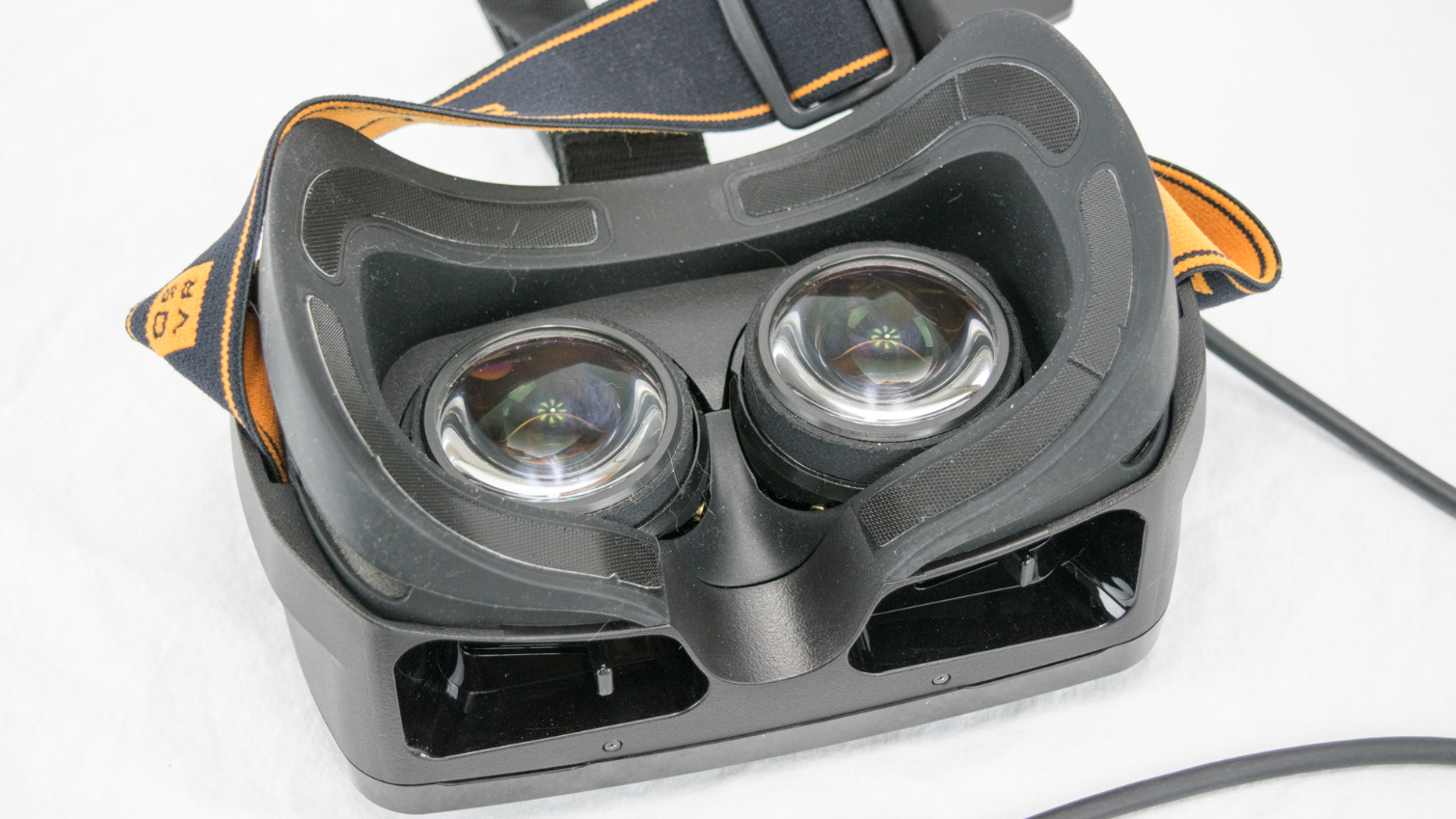
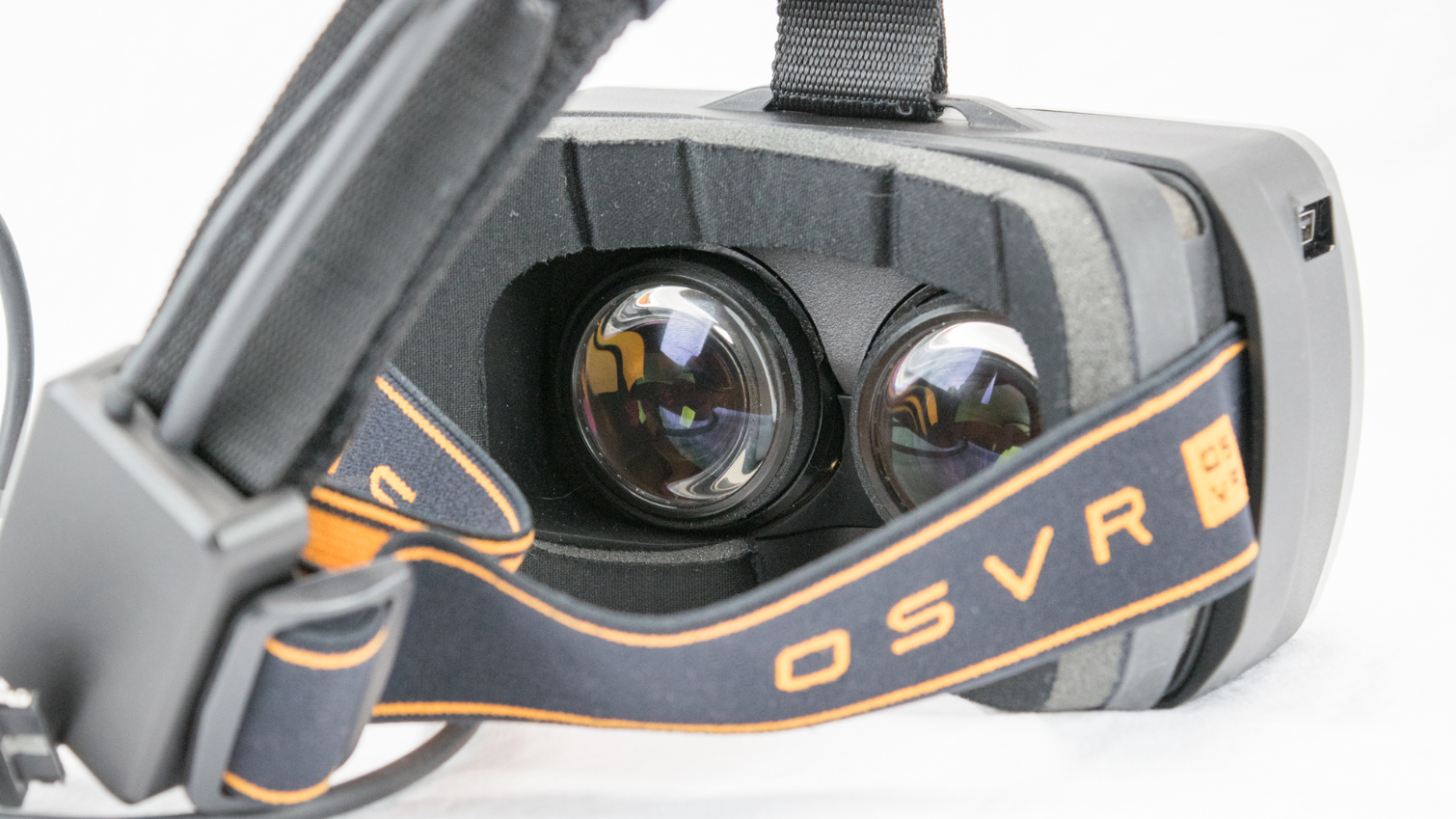
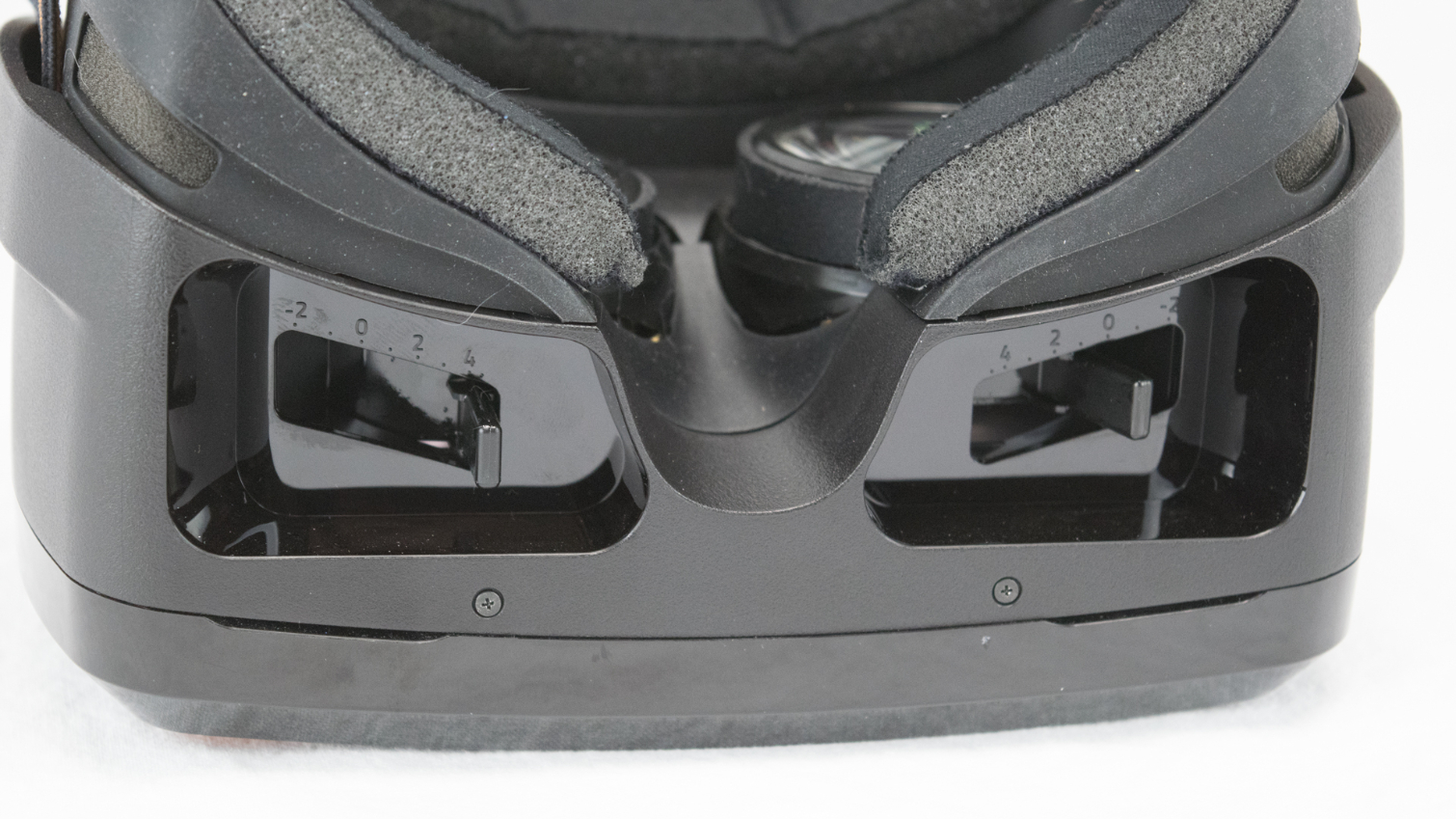
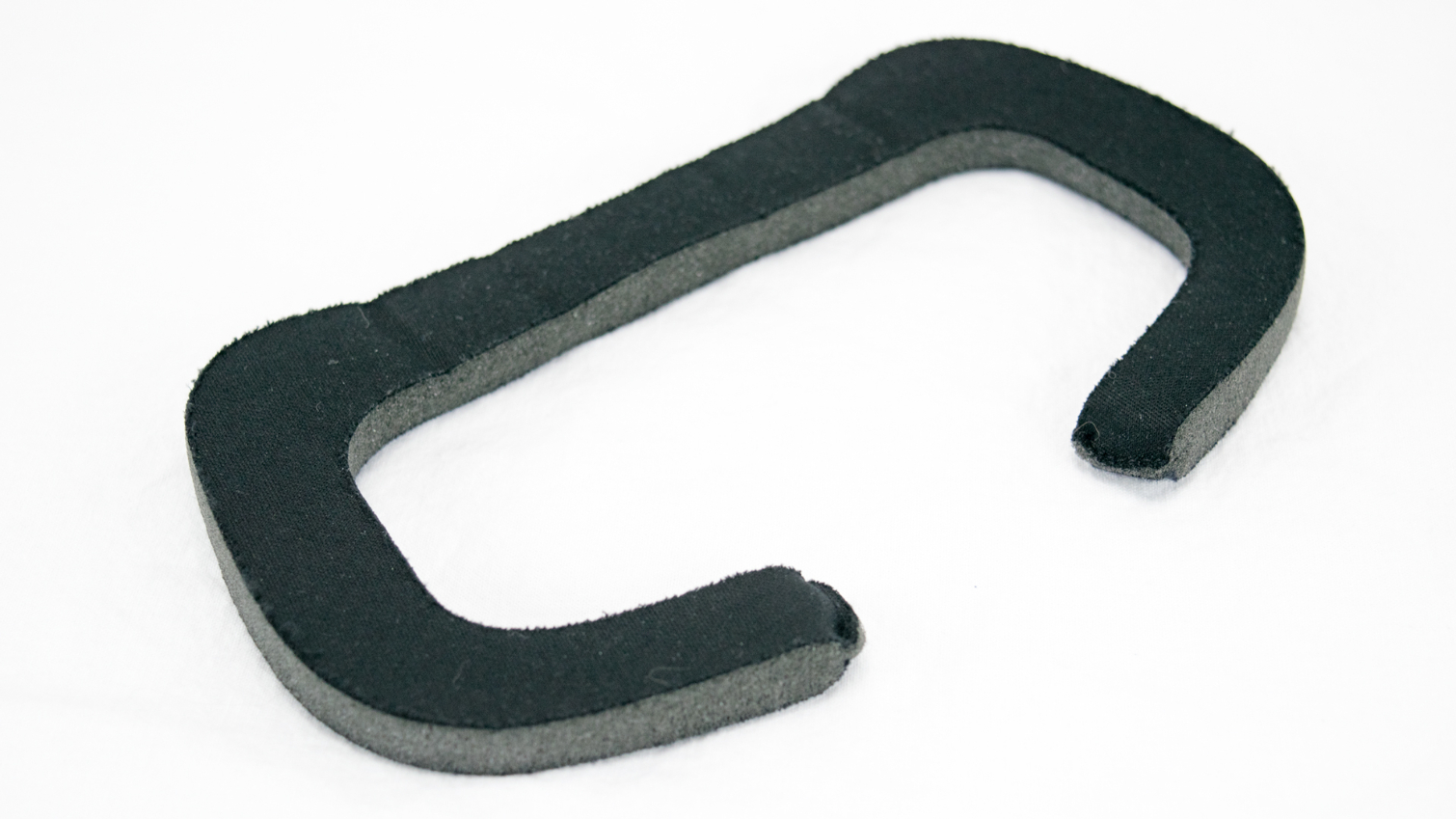
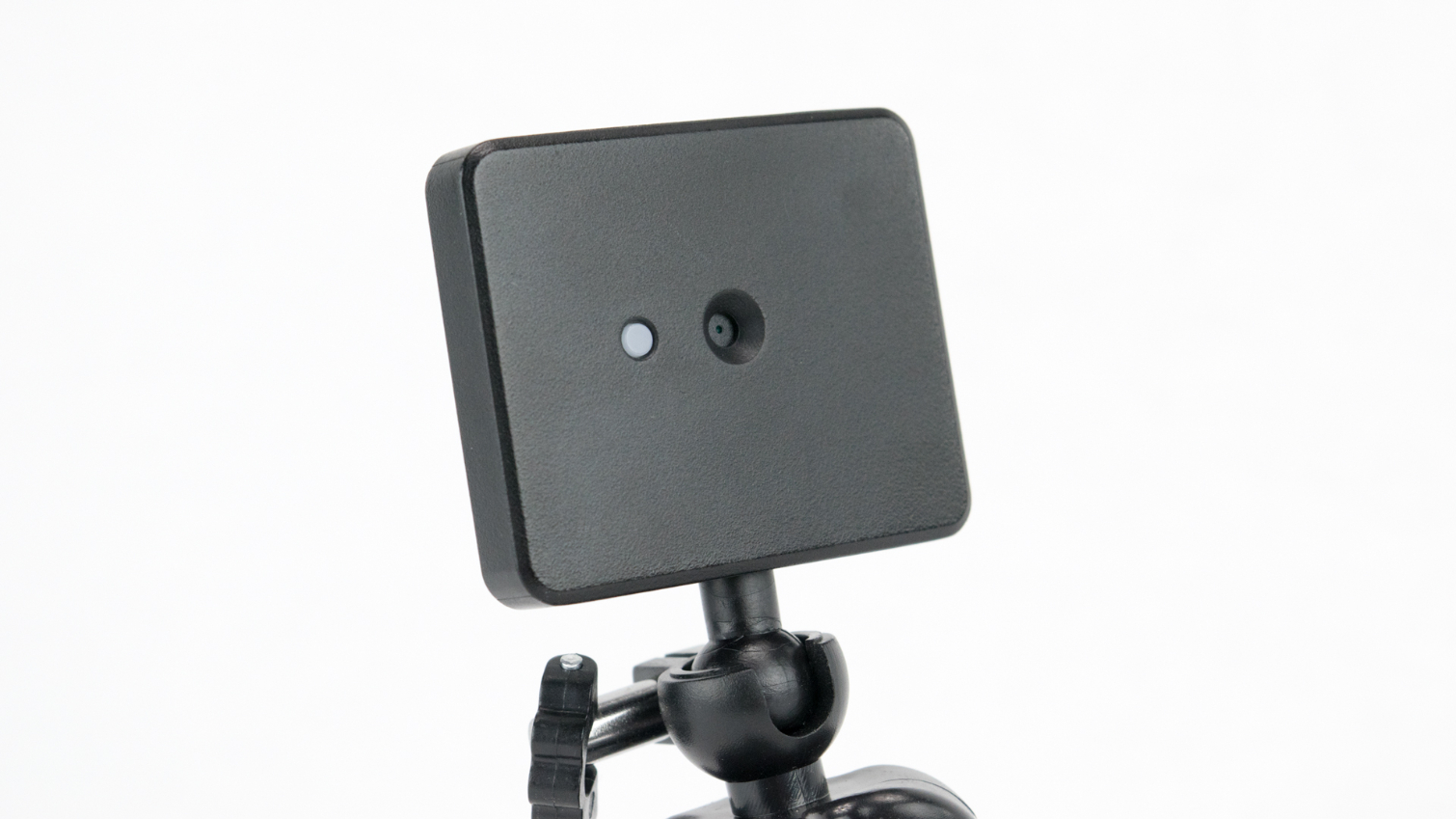
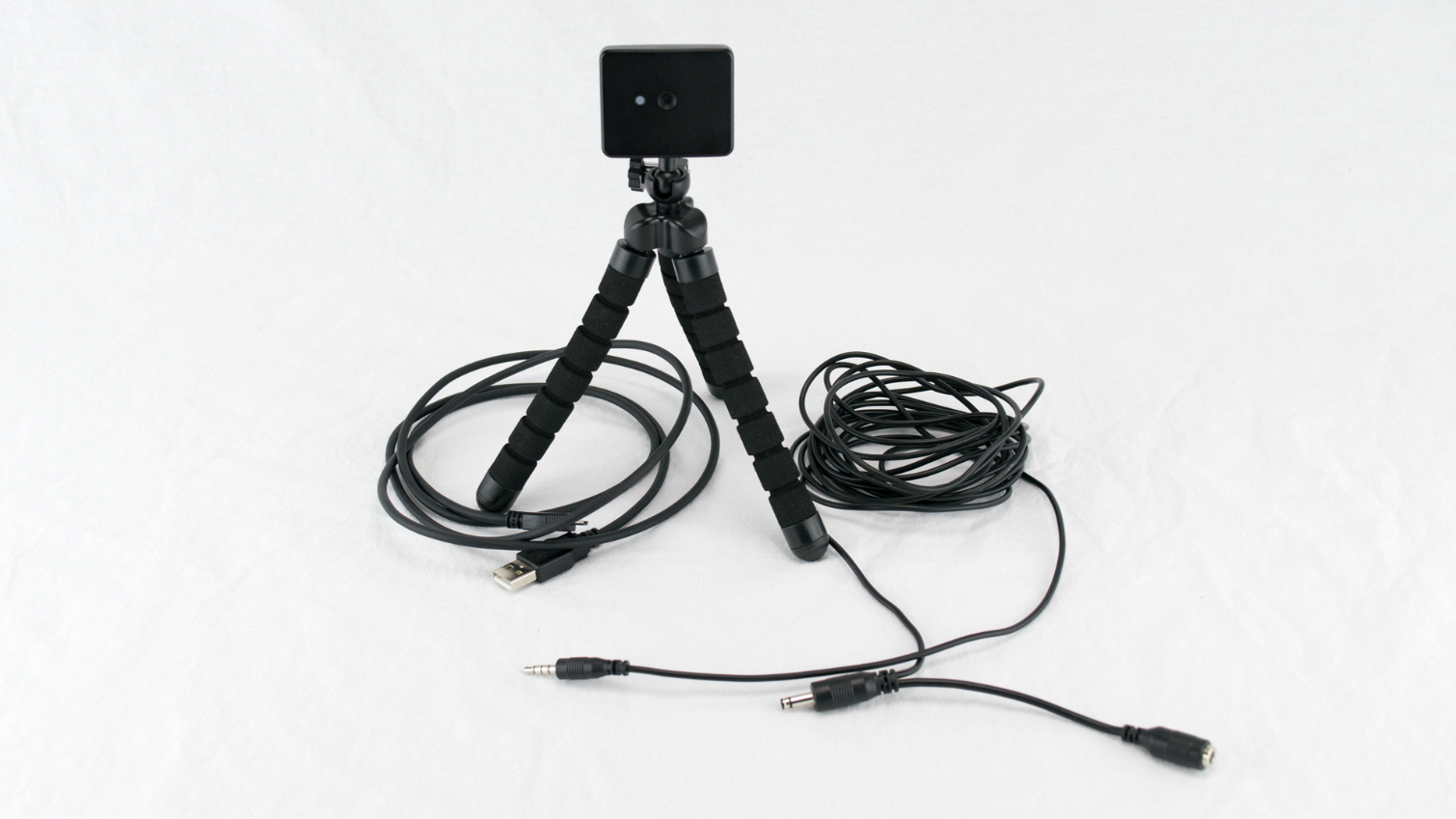
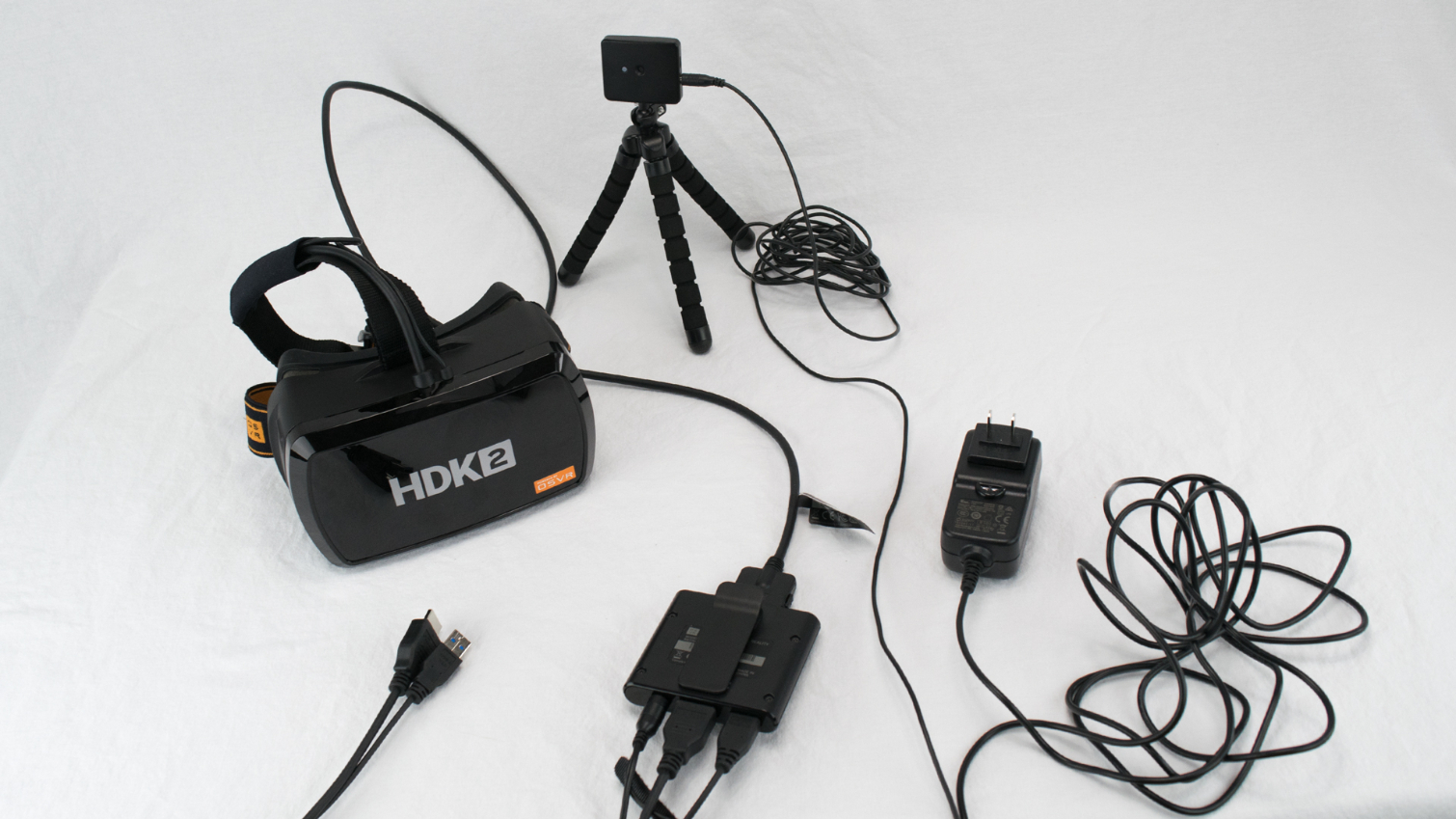
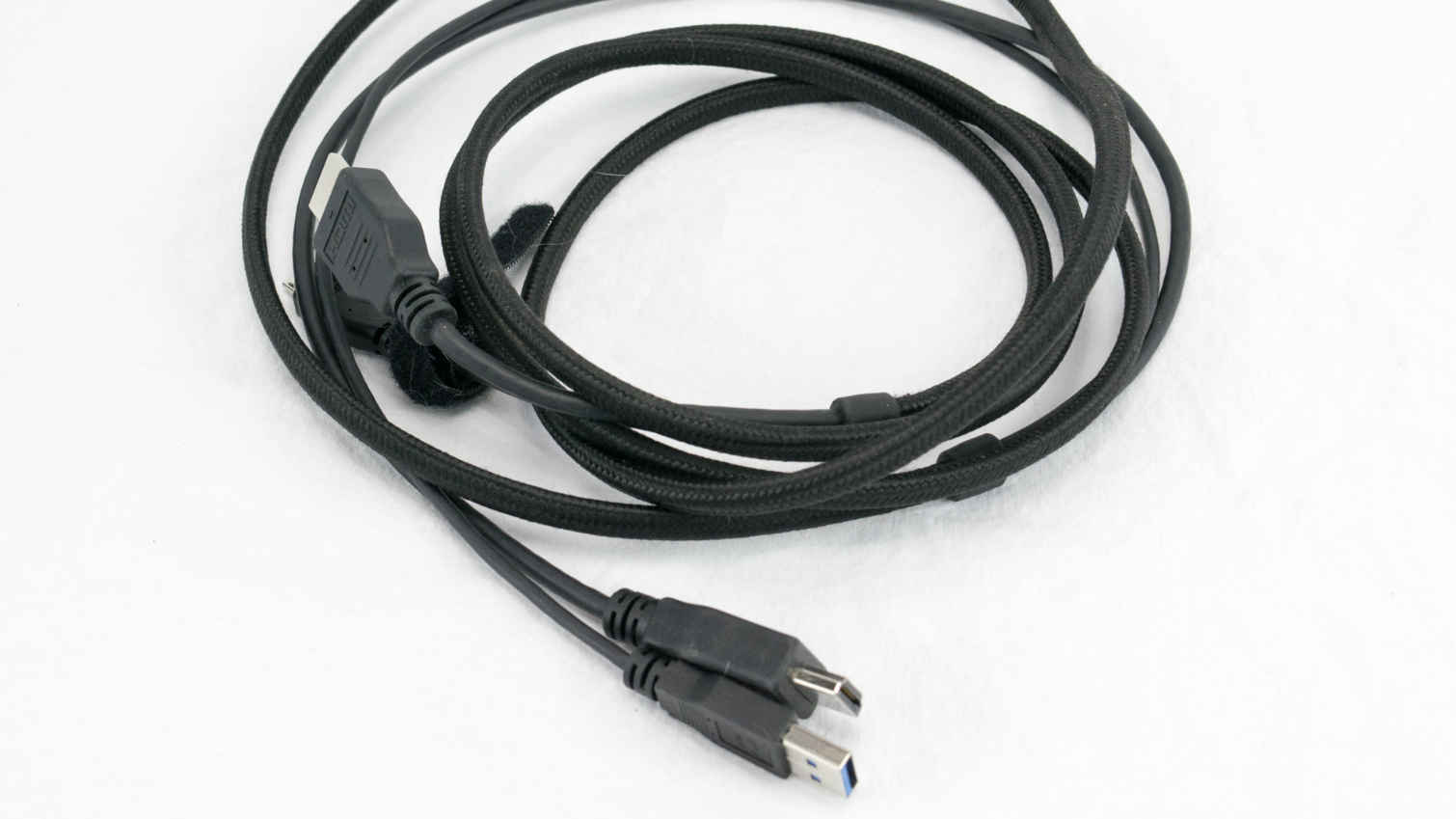
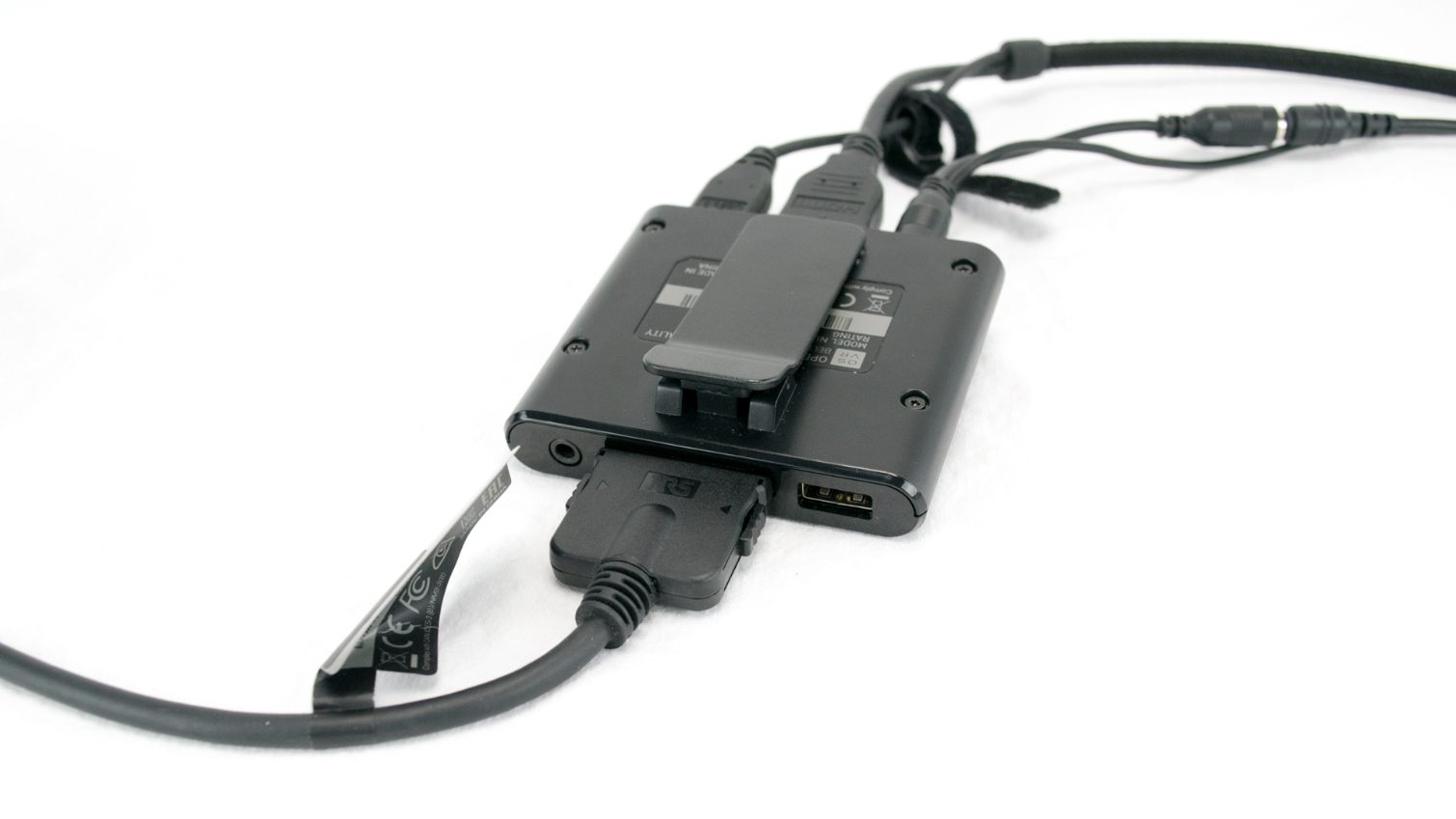

The OSVR HMD doesn’t include a mechanical IPD adjustment, but it does come with a feature missing from Oculus' Rift, HTC's Vive, and even the PSVR: you can adjust the focus for each eye independently using dials on the bottom of the headset. These adjustable lenses aren’t as useful as they sound, though. The dials have a range from 4.5 to -2 (the lower the number, the closer the lenses sit to your eyes), but the convex lenses touched my orbital bone and nose at a setting of 2. Anything closer was uncomfortable on my face, so even if my eyesight was poor enough to require extreme adjustment, this wouldn't work as a long-term solution.
The lenses that come installed in the OSVR HMDs are vastly different from what you get in the Rift or Vive. Oculus and HTC utilize a Fresnel-based design to help reduce the distortion caused by putting the screen too close to the lenses, while the OSVR HMD does not. Rather, the HDK2 uses the same round convex lenses found in the HDK 1.4. These round lenses produce a nice, clear image, but you must look straight ahead for maximum fidelity. Along the edges of your view (and thus, within your periphery), the lens shape distorts the image and reduces its clarity by a large degree. As a result, the OSVR HDK2 has a narrow sweet spot with perfect clarity. If your fitment isn’t ideal, the visual experience won’t be either.
MORE: Best Virtual Reality Headsets
MORE: All Virtual Reality Content
MORE: Virtual Reality Basics
MORE: The History of Virtual Reality
Kevin Carbotte is a contributing writer for Tom's Hardware who primarily covers VR and AR hardware. He has been writing for us for more than four years.
-
bit_user Thanks for taking the time & effort to review it.Reply
An interesting counterpoint would probably be this Amazon customer's review:
https://www.amazon.com/gp/customer-reviews/R32VP1Z15K5MBW/ref=cm_cr_dp_d_rvw_btm?ie=UTF8&ASIN=B01HDUVIZ0
